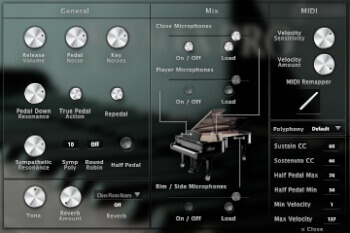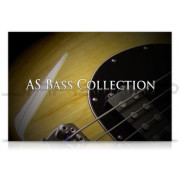You're currently on:
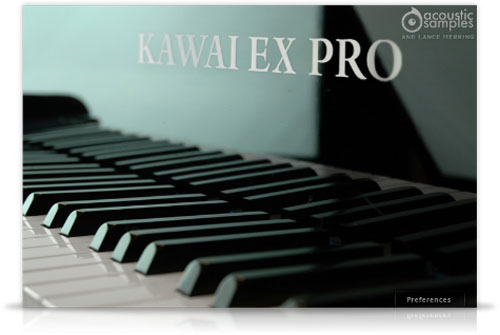
The Kawai-EX Pro sample Library is a fabulous, powerfull and bright 9-foot (276cm) KAWAI EX concert grand piano that used to be in the Kennedy center in Washington DC.
We worked closely with Lance Herring on this library (this is our second attempt after the AcademicGrand) and decided to give our project a new dimension, we carefully recorded this extraordinary instrument with 3 microphone pairs and state of the art Gear to try and recreate how powerfull and precise this instrument can be.

Preferences
Each feature is detailed below and of course it still contains the features of the previous versions like the release volume, pedal noise and key noise.
The Key Noises: the sound produced when you release a key and no corresponding sustain was played.
The Pedal Noise: the sound produced when you press or release the pedal, it adds a lot to the realism.
The Tone: a simple way to make the piano sound brighter or darker.
The sostenuto CC, also called the middle pedal. You can sustain selected notes, while other notes remain unaffected.
The polyphony. If you lower the buffer or simply want to be light on CPU, then increase or lower this value.
The Reverb. We use a convolution reverb and you can adjust the dry and wet parts separately as well as choose from a large selection of high quality Impulse Responses.
Round Robin. We added a software round robin feature for the users that need to play repetitive pieces.

The Player position with a pair of microphones next to the head of the piano player to really get the feeling of being in front of the piano.
The Rim position with a pair of microphones at the side of the piano to give more of a soloist playing with a piano perspective.
You can enable / disable, load / unload and mix each microphone position separately to get exactly the sound you want.
On / Off: You can easily enable or disable each microphone position.
Load: You can load / unload the samples of each microphone position. This saves Ram usage if you only use one position. Of course the controls are greyed out when the samples are unloaded.
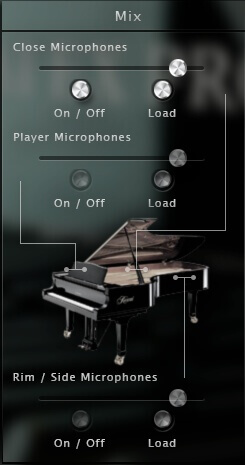

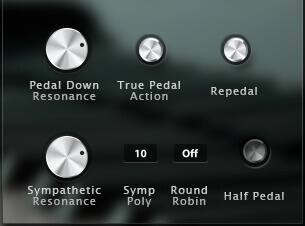
Resonances
There are two kinds of resonances that are important to model on a piano, the pedal down resonances and the sympathetic resonances between the held notes. Both these effects are present in the Kawai EX PRO, you can even change the amount of each of them.
The True Pedal Action enables the progressive resonance on pedal down when you press a chord and press the pedal afterwards.
Sympathetic Resonance controls the volume of the sympathetic resonance effect. If you want a piano that sings the harmonics, you can add a little more of that effect.
Symp Poly controls how many voices you want to allow for the sympathetic resonance effect.

Repedaling / Half pedaling
Helf Pedaling is as its name implies what happens when you play with the pedal half pressed. the decay is much longer and as the strings are not completely dampened, you hear some resonances.
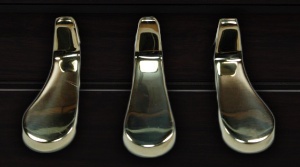

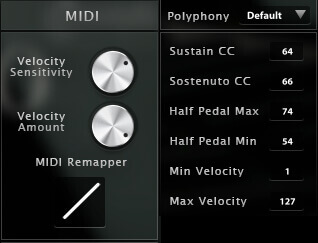
MIDI controls
The velocity amount controls the dynamics, so the minimum volume associated with the lowest velocity.
The MIDI remapper controls the mapping, so which velocity layer corrsponds to which velocity imput.
The Min and Max Velocity are simply the minimum and maximum velocity that you will have to play to hear the piano.
The Sustain CC is by default at 64 but can be changed to any other controller if you need to.
The Sostenuto CC is by default at 66 but can be changed to any other controller if you need to.
Sample player
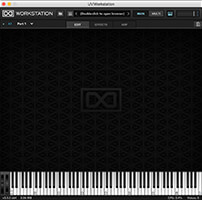

We provide it for free with every library that you buy, you don't need to buy an expensive sampler to use our products. It works on Mac (10.6 or later) and PC (windows XP SP2 or later), in standalone or as a plugin (VST / AU / AAX / RTAS / MAS) and in 32 and 64 bits. You can find more info about it here. If you want to use our products in osx 10.5, please contact us, you will need UVI Workstation v2.1.8 and earlier versions of the UFS files.


Technical description

You will then be able to register it to your iLok account from our website on this page (you need to be logged in to access this page). The whole process is described in the FAQ (instructions + screencast).
| Variant | 1 |










